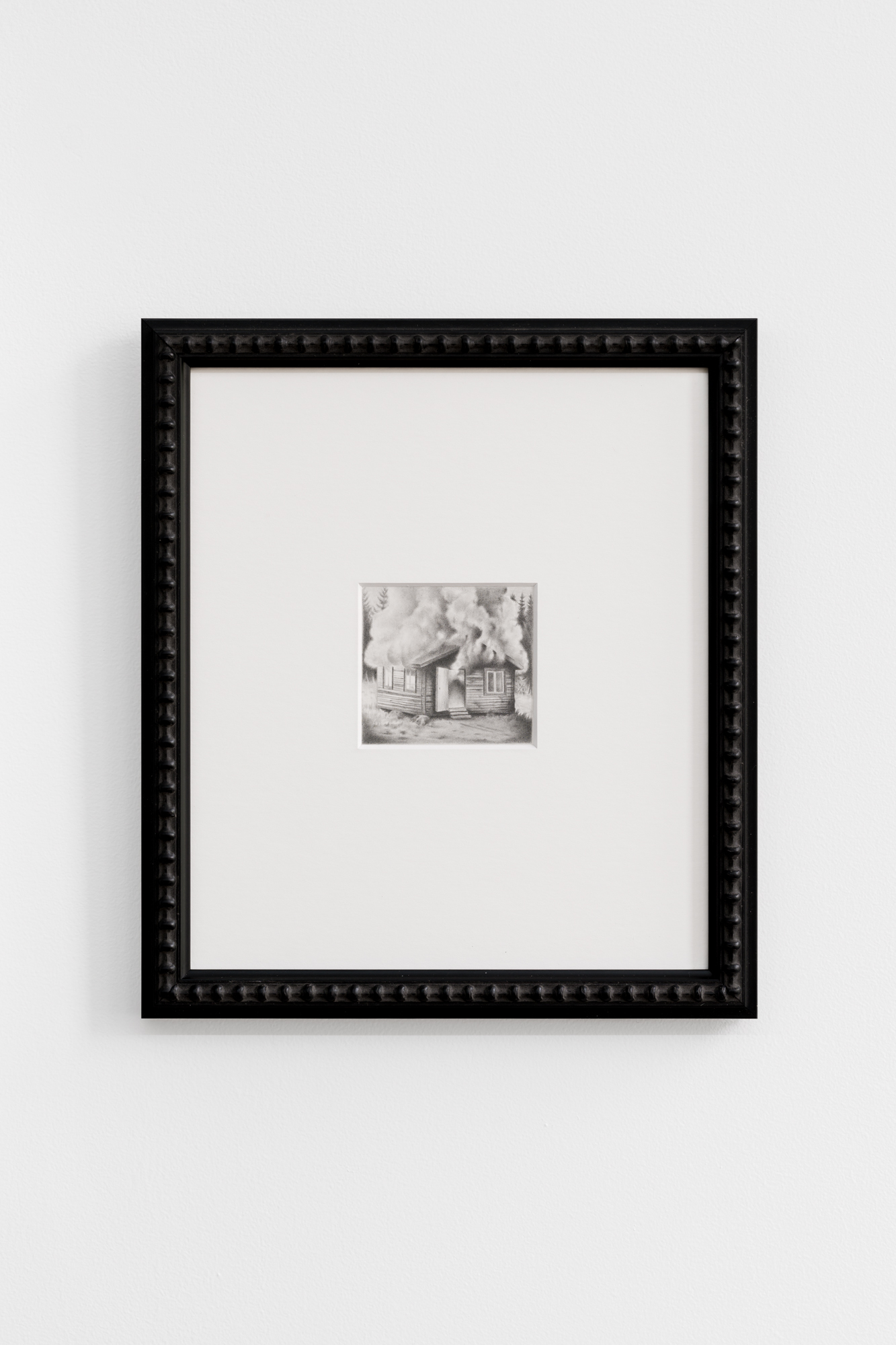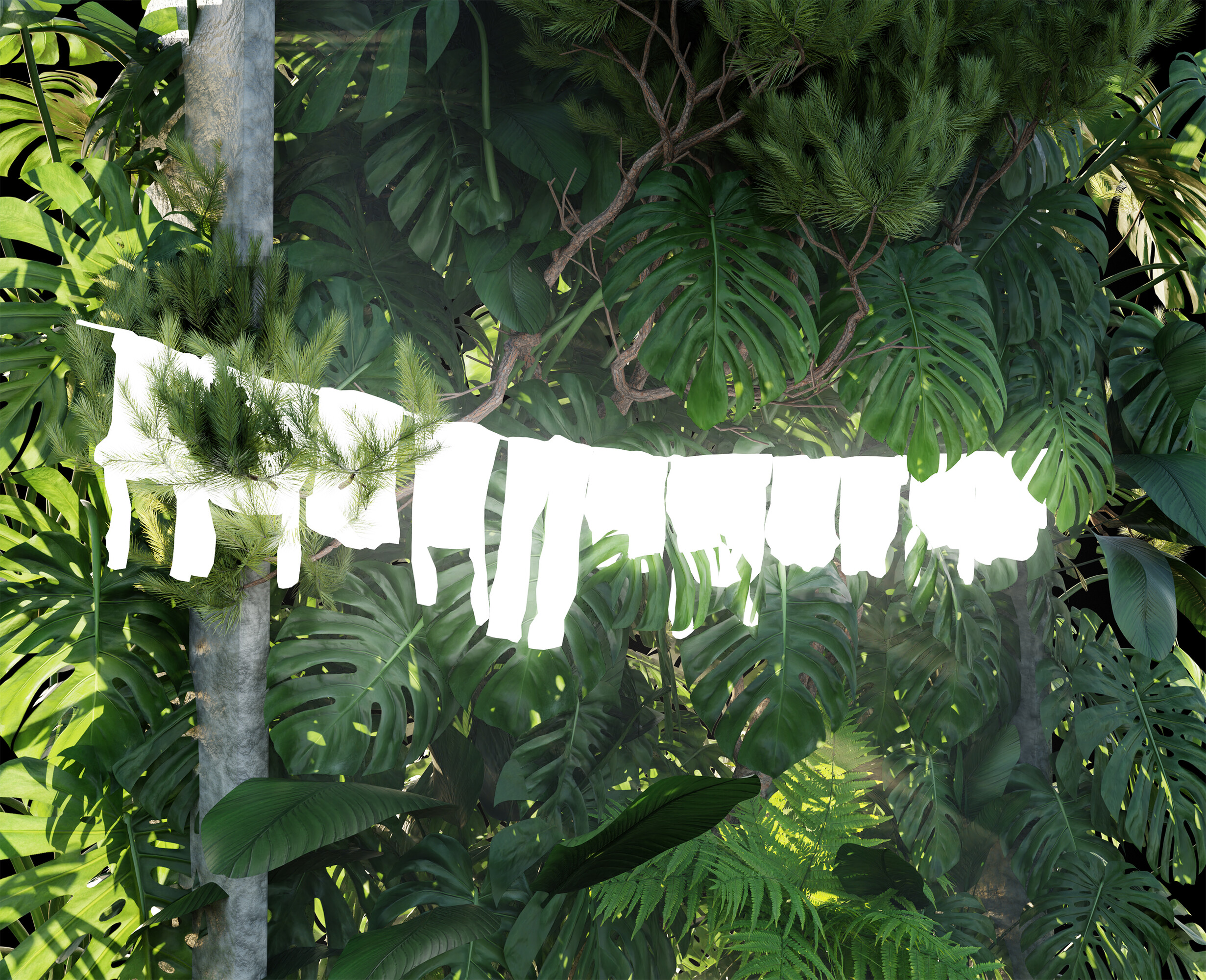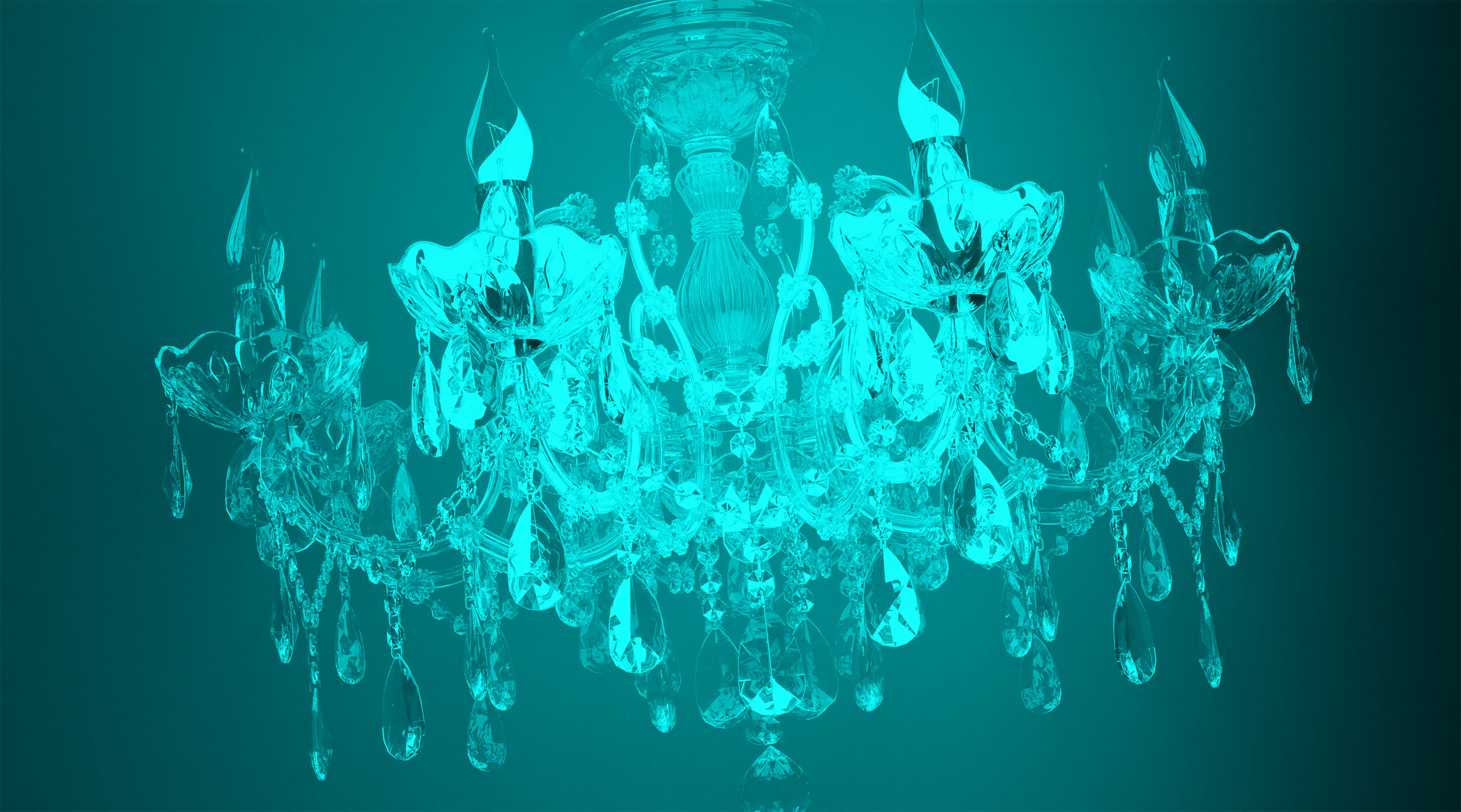Reaching inside your insides inside your insides inside your insides inside your insides inside your insides inside your insides
Tara Heffernan
Should there be “players” and “livers”, art and life, or only one thing?
—Wyndham Lewis, The Art of being Ruled, 1926.
Void_Melbourne opened in early 2022. Located above a 7-Eleven on Bourke Street in a building bracketed by fast food chain stores and second-rate beauty salons, the gallery is only a short walk from the CBD’s art scene mainstays Neon Parc, Tolarno Galleries and the iconic Nicholas Building. By the gallery entrance sits a black imitation Barcelona chair (very Patrick Bateman) and a mis-matched narrow white table, sufficing as the admin station for gallerist, Paul Handley. When I visited, the door to the second-floor balcony was open, allowing the calamitous reverberations of a freedom fighter protest below to roll in with the heavy spring air. Although Void_ is a commercial gallery, it has a subversive edge common to the grungier artist-run spaces in Melbourne. There are observable cracks in the walls and the curatorial impetus leans into art that’s a little gritty and ambivalent.

Case in point is the current exhibition, James Little’s Reaching inside your insides inside your insides inside your insides inside your insides inside your insides inside your insides. The display includes a series of small graphite drawings, digital prints and—most prominent—three 3D printed black swords. One is bent slightly, apparently the result of sun exposure. Two appear to be balancing with the tip of the blade embedded in the gallery floor, while the third’s blade appears lost in the wall. Here, Little nods to mythical swords, notably the Arthurian legend of Excalibur: a sword embedded in stone, destined to be pulled free by King Arthur. In the most influential version of the tale by Geoffrey of Monmouth, with the power granted by Excalibur, Arthur Pendragon united Britain against the Anglo-Saxon invaders. But the “hero’s sword” trope appears frequently in mythology, manifesting today in the sci-fi and fantasy genres. The mythic sword allows the subject who possesses it access to something beyond the ordinary, beyond the usual grasp of man. With this sword, the hero gains power, knowledge and truth. It’s a blatant phallic symbol.
Rather than magically embedded in the architecture of the gallery, Little’s swords are secured by an internal pin. They are also painted in Mosou black, a water-based acrylic paint that absorbs 99.4% of light (almost as black as vantablack, the paint that Anish Kapoor famously bought the exclusive rights to in 2016), resulting in a deep matte surface that largely obscures the object’s contours. Little describes it as “void-washed”. It’s an especially striking effect in the light-soaked white cube, but it looks most effective in photo documentation (a positive for Instagram promotion). Though the sword’s hilts are elegantly designed, the detail isn’t particularly elaborate. Combined with the powdery-black finish, the end result somewhat resembles the blocky, pixilated graphics of early video games, making the swords appear like a glitch in the gallery/the matrix.

Little plays many tricks with text in and around the exhibition: the title repeats “inside your insides” six times, seemingly going ever deeper. Moreover, almost all the works are titled with YouTube links. Little, who happened to be present when I visited the exhibition, explained that this was a random choice—a way to manage the task of titling works. Though these videos aren’t didactically linked to the artworks, they inadvertently provide a unique archive of the media the artist consumes, which no doubt leaves covert traces of its influence.
In a short text accompanying the exhibition, Little explains that Reaching inside your insides is an exploration of “why does the internet make me feel bad”, exploring tropes of heroism, internet dating, images of nature, the domestic and cynicism. The exhibition offers a probing meditation on contemporary masculinity and its discontents, pondering what it is to be a man and how socio-cultural changes have shaped contemporary experience, eroding traditional masculine roles and investments. Indeed, the economic and social markers of adult life are harder to achieve today, leaving adults stuck in a perpetual state of adolescence capitalised upon by the market. Much meaning is derived from entertainment media, fandoms, online communities and games. Many are perpetually dating (also often a gameified ritual now mediated by screens and algorithms) and forced into ongoing processes of self-aestheticisation, improvement and remodelling.

This reality seems to be lamented in youtu.be/-W-X18_anN4 (2022), a detailed graphite drawing depicting a burning house, with smoke billowing from its windows and door. The image is adolescent in its clichéd symbolism, but it’s all the more striking for this didacticism. It would make a great album cover, as many of Little’s works would. (By the way, the YouTube link is to the song ‘Darts’ by System of a Down, featuring the screeching lyrics “May I please remain in this space?”) Rather than a comfortable family home, however, the structure Little has drawn resembles a humble cabin. It’s a shelter nonetheless, a place where things are meant to be safe and stable, protected from the threats of the outside world. Fire coming from the inside signals internal disaster. The nuclear family is out of reach for many, but there’s no great salvation—or truly dependable stability—in solitude either.

Traces of family life appear also in digital prints youtu.be/wK7GSARUs_Q (2022), featuring glowing white clothing hanging on a line against a jungle-like background of plant-life, and youtu.be/WY4m5z9Y1JM (2022), depicting a shimmering crystal chandelier slightly off centre, as though swaying in a draught. Though it’s not a perfect match, the chandelier resembles the one in the film Donnie Darko (2001) which trembles when Donnie’s bedroom is crushed by the mysterious falling jet engine. The chandelier, though associated with wealth, is another cliché symbol of the home. It haloes the family in spaces of togetherness, but it is also delicate, responding to air currents and threatening to fall without proper installation or maintenance (aka, a “broken home”).

The sword also stands for the speculum—for obsessive penetration “inside the insides”, always searching deeper and deeper. I would argue that Little’s art could be described as embodying masculine traits, at least in essentialist terms. His work largely (though not entirely) eschews feelings, focusing instead on technical details, direct symbolism and how to draw meaning from disparate elements. It’s all about logic, information and the way that things fit together. For example, Little’s earlier photorealist digital drawings (not exhibited at Void_) resemble American painter Chuck Close’s iconic headshots. Gridded out and blown up much larger than life, Close’s portraits revealed the subjects’ faces in intricate detail: wrinkles, stubble, pores, blemishes, all the small imperfections that usually go unnoticed. Little’s portraits are similarly unflattering. These large-scale images of faces were created via digital processes that mimic the technical traces of traditional drawing (a skill that Little is obviously adept in and values, and one that is largely devalued by contemporary art schools in favour of deskilled, “conceptual” art). In them, we observe another form of probing examination—of trying to look deeper into the image, to reveal something beyond the details of the face about the process of recognition and of image making itself. This process is evident also in the digital prints featured in Reaching inside your insides, which similarly use digital imaging processes to create photorealist depictions with no real-world referent.

This interest in the insides can be very literal at times, as in youtu.be/cmYsRcLMvO8 (2022), a digital print of an x-ray image of a Hammerhead shark’s head. The artist explained that his desire to depict this form stemmed from an interest in what things look like from a different perspective. The fact that it resembles a pelvis is probably also significant. Its proximity to a tiny digital print of tree—a symbol of life, knowledge and cyclical processes—reinforces the reproductive connotation. Little clarified that the motivation for another digital print, youtu.be/DQw_kHoGKic (2022), which features spider fangs, was that it looks cool. It does.
youtu.be/phxMQGvVMnY (2022) is the only artwork in the exhibition to feature the human form. It depicts a naked woman, waist up, taking a selfie in the mirror. The iPhone obscures her face, anonymising her. It is also unflattering. Her breasts sag slightly, due to poor posture indicated by the forward tilt of her somewhat emaciated shoulders. It boasts the sinister honesty of darker amateur pornography. While IRL pick-up culture is perhaps rightly discouraged by proponents of #metoo, I wonder whether it’s truly preferable to relegate sexual interactions to apps generating tens of billions of dollars annually. The brutal honesty in this picture strikes me as a self-aware reaction to the well-documented male distrust of filters, lighting and posing—a way to ensure the buyer won’t be unhappy with the product when they see it in the flesh.

Interestingly, the YouTube link used to title this drawing takes us to a clip titled “Literally Me”: a montage compiling scenes from films like Taxi Driver (1967), Fight Club (1999), American Psycho (2000), Donnie Darko (2001) and Nightcrawler (2014) and television series True Detective (2014–2019) and Mr. Robot (2015–2019). The clip is accompanied by a remix of Mareux’s ‘The Perfect Girl’, a coldwave cover of a song by The Cure featuring titillatingly sinister lyrics like “I’d like to shake you around and around”. This cultural phenomenon is worth unpacking a little as it might give further insight into the exhibition’s position on masculinity in crisis and art.
The “Literally me” meme started as a joke on men who identify with these characters. While Vladimir Nabokov asserted that it is the proclivity of the philistine alone to look for themselves in art, today we are obsessed with feeling “seen” and being “represented”. This discourse is deafening in the arts. Usually, however, it refers to benevolent characters who represent identities or experiences of those who are not white or male. Men, the historically default universal subject, therefore occupy the role of morally complex characters worn down by society at large. And men do see themselves reflected. The comments section of this video is full of apparently sincere comments like this one: “I do see myself in these people … At The end of The day, they’re not just men, they’re feelings and experiences.” Notably, many of these onscreen anti-heroes are entrepreneurs or grifters of some kind that profit from others’ shame, weakness or pain. On a recent podcast, high school dropout turned manosphere-adjacent entrepreneur Iman Gadzhi explained “wealth is built through practicality, not passion”. Indeed, society doesn’t reward passion (or art?) anymore, but the exploitation of gaps in the market. Crucially, these “literally me” characters are often not controlled or subdued by shame, which is a potent form of soft social control today (the fear of being laughed at, the fear of being socially reviled, etc). Their transgressions thus invigorate viewers who themselves feel trapped by, in the words of Christopher Lasch, “a society that demands submission to the rules of social intercourse but refuses to ground those rules in … moral conduct”. So, they choose the self. It doesn’t look like the progressively coded individualism we’re used to, but it reveals the terrifying shadow-side of the liberal self-fulfilment fantasy.
The YouTube link titling one of the black swords, http://youtu.be/PES9tpN-b1w, leads to a clip titled ‘What Postmodernism IS and REALLY ISN’T—Jordan Peterson analysis’ by The Media Insider. It’s a nauseatingly weak critique of Jordan Peterson’s take on postmodernism. “I feel, he has hijacked the word Postmodernism”, The Media Insider argues, “as a tool in his argument of left versus right.” He claims that Peterson, in very “confrontational” language, “uses postmodernism as a label for anyone with progressive, individualist, left-leaning views in an attempt to discredit their non-traditional beliefs”. No doubt. But are “progress” and “individualism” inherently leftist values? This is a relatively new conflation of concerns that sits uncomfortably with leftist politics, which traditionally focused on fighting for economic equality, serving the community and workers’ rights. While Peterson isn’t the best authority (and has undoubtably built a following on perpetuating the culture wars), it’s crucial to acknowledge that his critique of postmodernism shares some similarities with those of leftist commentators like Catherine Liu, Walter Benn Michaels and Angela Nagle, who have all ardently critiqued the legacy of the New Left and the lingering impact of postmodernism on academia and culture. Postmodernism, they argue, has been a muddying influence that has confused aesthetic gestures with material change, bolstering neoliberal self-empowerment rhetoric in place of more pertinent political debate. Does Little agree with The Media Insider on postmodernism? In light of other references, perhaps Little is coyly signalling the impotence of discourse on the so-called left. Maybe the sword is bowing under the weight of empty ideological promises rather than just sun-exposure? Thankfully, it’s far from flaccid.
Tara Heffernan is a blind art historian currently completing a PhD (Art History) at the University of Melbourne on the work of post war Italian artist Piero Manzoni.


